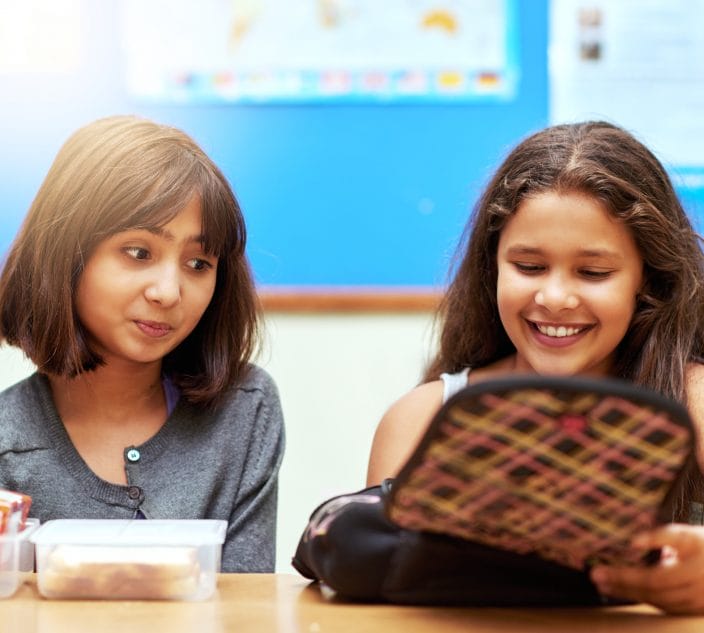
When many people think of a kitchen garden, they jump to thinking about the food you get and the money you can save. But we take a different approach.
Our garden is a special place of peace and calm. My family treats it as a “learning garden,” and the kids even call it that. Our kids do not feel burdened or upset when something goes wrong. And in the garden, things will go wrong! From unfriendly bugs that can ruin months of progress, to the extreme weather conditions we can get in Georgia, as well as random plants growing well one year and doing not so great the following year.
Creating a learning garden has helped our kids to build their self-esteem while learning about responsibility. My kids’ allergies preclude pet-owning, but they proudly say they have a garden to care for.
It’s not that they just care for individual plants, they understand they have created a new ecosystem.
Gardening involves planting, fertilizing, weeding, watering and harvesting. But it also sprouts related skills, like cooking and food preservation. Thanks to the learning garden, I’ve been able to diversify the palates of my boys. Foods that I would not have been able to talk them into tasting, they now volunteer to try – because they grew the ingredients. My middle child, Chauncy, loves developing recipes that use our freshly harvested herbs, fruits and vegetables like mint, berries, peppers and cabbage.
One day in the garden, Aubrey, my youngest, walked past the herbs and excitedly said, “these plants smell like the Olive Garden.” When I explained that many of the herbs we were growing are used in Italian foods, including pizza, he asked me to make a pizza with basil leaves. I was pleasantly shocked.
Trying New Foods With EoE
In addition to anaphylactic food allergies, Aubrey has eosinophilic esophagitis (or EoE). Over the years, he has faced the eating issues that accompany EoE because it causes serious inflammation in the esophagus. We have worked with speech-language pathologists to help with difficulty swallowing hard foods because of what’s known as dysphagia. This is when inflammation leads to foods getting stuck, creating an impaction and choking.

Even when Aubrey’s dysphagia is under control, it can be difficult for people with EoE to reintroduce foods that once blocked their airway. Severe eosinophilic esophagitis can snowball from an allergy-restrictive diet to a texture-restrictive or dysphagia diet as well. With EoE flares, dysphagia can come and go. Yet since we began gardening, Aubrey has been adventurous with trying new textures. You cannot imagine my excitement each time he suggests a new fruit or vegetable he’d like to taste. This is big progress.
The phenomenon of my kids asking to eat things they usually would not eat does not end with Aubrey. My eldest, Tory, who is allergic to shellfish and finned fish, used to stick strictly to hot, cooked food. Since he took to planting, Tory heads out to the garden to harvest his fruits and veggies and try them as they are. He’s even taken a liking to green smoothies, freshly pressed juices and salads. Before we started gardening five years ago, I wouldn’t have believed this.
When you grow up with food allergies, there’s a big focus on all the things you cannot eat. Rightfully so, those things can kill you. But gardening has helped us shift our relationship with food. Today, my entire family sees the nearly limitless numbers of meals we can create with fresh fruits, vegetables, herbs, and even edible flowers, like the blossoms of squash and pineapple sage.
Gardening Brings Us Closer
These meals are healthy and allergy-safe, and we take more pride in creating these meals because we produced the ingredients. As we enjoy the results at the dining room table, we discuss the taste, texture, nutrition, and aesthetics of our meals. As an English teacher, I can’t help but also teach my boys how to use more descriptive, sensory vocabulary.
We talk, and we belly laugh about our garden encounters with wildlife. Tory and I can do without all of the creepy crawlies that accompany the garden ecosystem, while Aubrey has given everything a name, from the plants to the birds that fly over our house, to the bugs, lizards, butterflies and frogs. Chauncy, who’s so often our recipe creator, researches and tells us the function and origin of things he sees in the garden.
Outside of the occasional sneeze (seasonal allergies), my husband is like a storybook character in our garden: butterflies land gracefully on him, and he walks through bees and other critters without fear. Thanks to the learning garden, we are never out of stories to reflect on.
Recently, Aubrey found out that the herbs we are growing are used to produce “smell-good things,” such as potpourri, soaps and bath bombs. I asked the boys if they’d like to learn to make soap or bath bombs, so I guess that’s what’s next!
I started the garden as a space where I could feel free and relieve stress. Never did I dream it would turn into a big outdoor classroom that has helped my family grow closer together. Each of my kids has gained life skills and confidence through caring for our garden. At the same time, we have cultivated a love for food and flowers that we can enjoy, even though we have food and environmental allergies.
Our learning garden has done wonders to enrich our lives. I hope yours will as well.
Amber Spann is a language arts and social sciences educator and food allergy advocate. She lives with her family in Georgia. Her family’s website is TrilogyInMotion.com.
First published in the Our Stories e-magazine, get the whole online publication here.
Related Reading:
Making Food Allergies Visible Series: See more great articles.
How to Keep Allergens Out of Your Garden With Expert Thomas Ogren
Low-Allergy Plants for the Garden
The Food Allergy Girl – Who Nobody Gets
Crunchy Summer Salad





